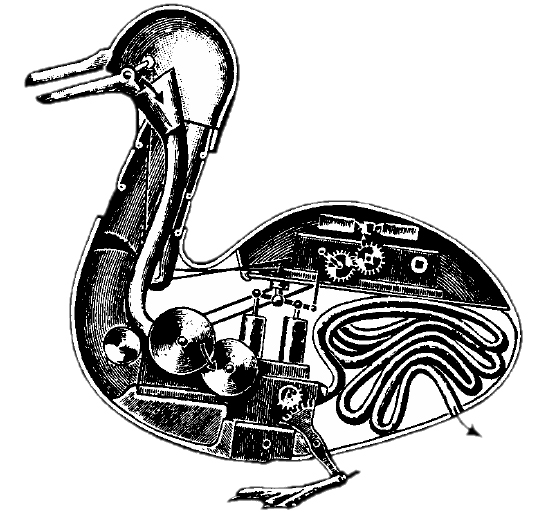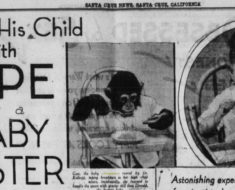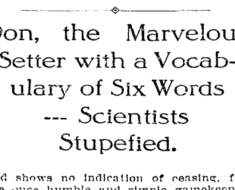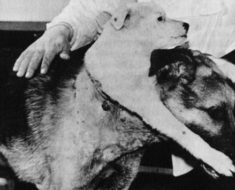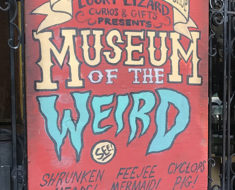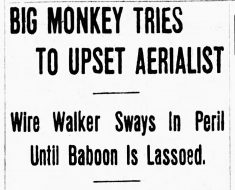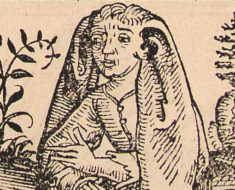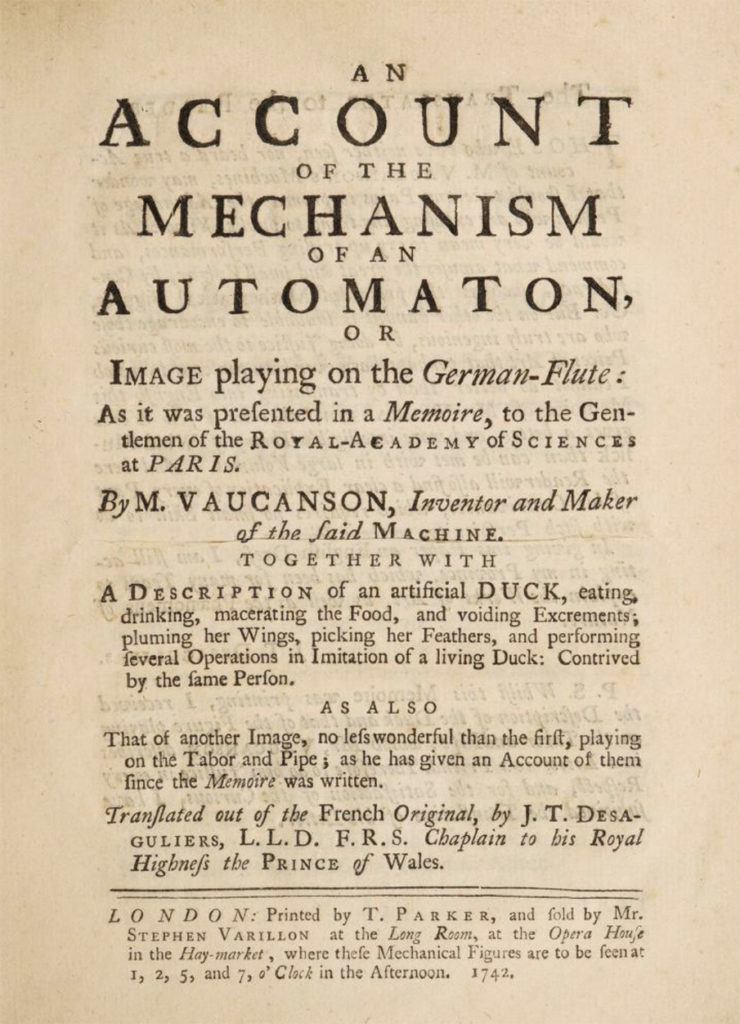
Vaucanson details his pooping duck in this 1742 booklet.
Long before AI, computer technology, and even electricity, crafty artists were engineering robots to do a variety of entertaining tasks. Jacques de Vaucanson made several of these automata, including a 1739 masterpiece known as the Digesting Duck—or if you prefer, the Pooping Duck.
This remarkable feat of engineering was designed to mimic a duck as precisely as possible. Vaucanson even boasted that anatomists wouldn’t find anything wrong in his thorough construction of the duck’s wings.
Once wound up, it waddled around, drank water, played in water with its bill, and even quacked just like a real duck.
But Vaucanson’s greatest feat was designing the duck to eat a piece of corn, digest it, and poop it out.
Real corn. Real poop. Fake duck.
In a 1742 booklet, Vaucanson offered a description almost as detailed as his mechanism. Here’s a portion of it:
My second Machine, or Automaton, is a Duck, in which I represent the Mechanism of the intestines which are employed in the Operations of Eating, Drinking, and Digestion: Wherein the Working of all the Parts necessary for those Actions is exactly imitated. The Duck stretches out its Neck to take Corn out of your Hand; it swallows it, digests it, and discharges it digested by the usual Passage. You see all the Actions of a Duck that swallows greedily, and doubles the Swiftness in the Motion of its Neck and Throat or Gullet to drive the Food into its stomach, copied from Nature: The Food is digested as in real Animals, by Dissolution, not Trituration, as some natural Philosophers will have it. But this I shall treat of, and shew, upon another Occasion.
A look inside how Vaucanson’s pooping duck may have worked.
The Matter digested in the Stomach is conducted by Pipes, (as in an Animal by the Guts) quite to the Anus, where there is a Sphincter that lets it out.”
Vaucanson also created a flute player—his first automaton, and another that played a small drum.
Though his works were true marvels, some lamented that he didn’t put his talents to better use. “It is much to be regretted that he misspent so much mechanical genius upon objects which were of no practical utility to man,” wrote one 1897 newspaper.
But does entertainment and wonder not offer some form of utility? If you’ve read this far, then two-hundred eighty years later the pooping duck is still delighting its audience.

